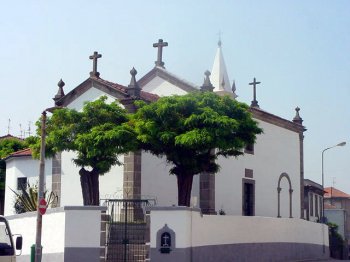Explore the best places
Monuments in Porto

Estátua a Afonso de Albuquerque
- heritage
Largo de Dom João III
4150-429, Porto
Stone statue by Diogo de Macedo, built in 1930. It is at the Largo de D. João III, at the Bairro Gomes da Costa.
Estátua de António Nobre
- heritage
Jardim João Chagas - Jardim da Cordoaria
4000, Porto
This monument, with a bronze bust, was open in 1926, by Tomás da Costa, in the former Cordoaria Garden, today João Chagas Garden. Here, the work of the poet called “Só” is quoted. It is made with flowers’ bouquets and a lyre allegoric to its poetical inspiration.
Estátua de Almeida Garrett
- heritage
Praça General Humberto Delgado
4049-001, Porto
The statue of this Porto’s writer was made by Salvador Carvão da Silva Barata Feyo. The statue is placed at the Praça General Humberto Delgado. Open in November, 1954, this bronze statue, representing the poet, was made to mark the centenary of his death.
Casa Mourisca
- heritage
Rua José Falcão, 191
4050-314, Porto
The exterior is covered with large, thick tiles, with different shapes and dimensions. With geometric designs and embossed, to taste neoárabe, dominated by the light and dark brown.
Praça do Marquês de Pombal
- heritage
Praça do Marquês de Pombal
4000, Porto
Ancient Largo da Aguardente (“firewater” lake!) connected to the Napoleonic invasions, under the command of General Soult, in 1809, and also to the liberal battles. On the western side of this square is the Imaculada Conceição Church.
Rua de Santana
- heritage
Rua de Santana
4050, Porto
The Sant’Ana Strret started a little further up the Mercadores Street with the Banharia. One part of the street was destroyed and the Colégio de são Lourenço was later built there.
Rua de Cedofeita
- heritage
Rua de Cedofeita
4050-173, Porto
This street right in the limit of the area classified as world heritage, is one of the most stirred streets of Porto and was once the main access to the city. During the XVIII century it was called the Rua da Estrada or Rua Dirieta de Cedofeita. Some buildings in the street are still from that century. Today, a great part of the street is pedestrian, with Portuguese traditional stone-pavement. It is a commercial area with many shops and, on the contrary of down town, it hasn’t lost its residential characteristic. The fact that it is close to many faculties, …